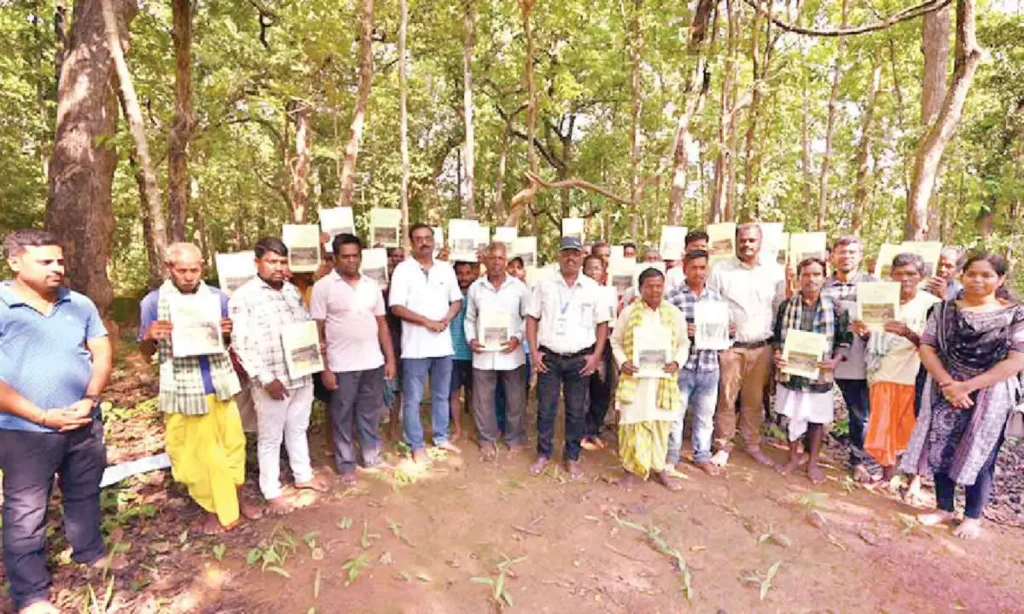Context:
Recently, the Mankidia community was formally provided habitat rights under the legal sanction of the scheduled tribes under the Forest Rights Act, of 2006.
More on the news:
- Mankidia is the second PVTG to get habitat rights in the state, while the district-level committees (DLCs) have approved for the other four communities.
- So far, Paudi Bhuyans (the first PVTG to receive habitat rights title in Odisha), Juangs, Chuktia Bhunjia, Saora and Dongria Kondh were the five PVTGs that have been approved for getting habitat rights under FRA.
- With these, Odisha became the leading state in the country to approve the habitat rights of six PVTGs — the maximum in the country.
- Chhattisgarh has provided habitat rights to two tribal communities (Kamar and Baiga), Madhya Pradesh (Baiga) and Maharashtra (Maria Gond).
Particularly Vulnerable Tribal Groups (PVTGs).
- In 1973, the Dhebar Commission created Primitive Tribal Groups (PTGs) as a separate category, which are less developed among the tribal groups.
- In 2006, the Government of India (GoI) renamed the PTGs as Particularly Vulnerable Tribal Groups (PVTGs).
- PVTGs have some basic characteristics -they are mostly homogenous, with a small population, relatively physically isolated, social institutes cast in a simple mould, absence of written language, relatively simple technology, and a slower rate of change, etc.
GoI follows the following criteria for the identification of PVTGs.
- Pre-agricultural level of technology
- Low level of literacy
- Economic backwardness
- A declining or stagnant population.
- Currently, there are 75 PVTGs in India.
- Odisha is home to a maximum of 13 PVTGs — the highest among all states and Union Territories.
Mankidia community:
- Location: Mayurbhanj (Northern Plateau Zone).
- Language: Austro-Asiatic / Munda.
- Occupation: Basket, rope, and sling making out of siali, fiber, sabai grass, and jute, Monkey catching, Khali stitching, and pressing leading to the name “Mankidi” or “Mankidia.”
Techno-Economic Stages: Hunter-Gatherers.
Religion:
- The Mankidias are polytheists.
- They believe in both malevolent and benevolent spirits and Gods.
- Logobir and Budhimai are their supreme deities.
- They worship their ancestors to enjoy health and achieve success in hunting and collecting forest produce.
- Each clan has its own deity.
Cultural Characteristics:
- They are one of the most primitive and little-known forest dwelling and wandering communities of the state as well as the country.
- They speak a form of Murda language and some of them are also conversant in Odia.
- They wander inside the forest in small bands and stay at different tandas- the temporary make-shift settlements comprising of temporary dom-shaped leaf huts known as Kumbhas.
Legal Recognition of Habitat Rights for the Mankidia Community
- The Mankidia community has now received legal recognition for their habitat rights.
- Before this recognition, the Mankidia were officially barred from accessing forest land.
- They were also prevented from utilizing forest resources.
- With the new habitat rights, they can now engage in their traditional activities without obstruction.
- The most significant and critical rights availed under this Act are the rights over community tenures of habitat and habitation for PVTGs and pre-agricultural communities under section- 3.1 (e) of the Act,
Habitat:
- The term “habitat” includes areas that consist of traditional living spaces. It also encompasses additional habitats within reserved and protected forests.
- This definition is provided in Section 2(h) of the Forest Rights Act (FRA).
- This definition applies to primitive tribal groups, pre-agricultural communities, and other Scheduled Tribe Forest dwellers.

